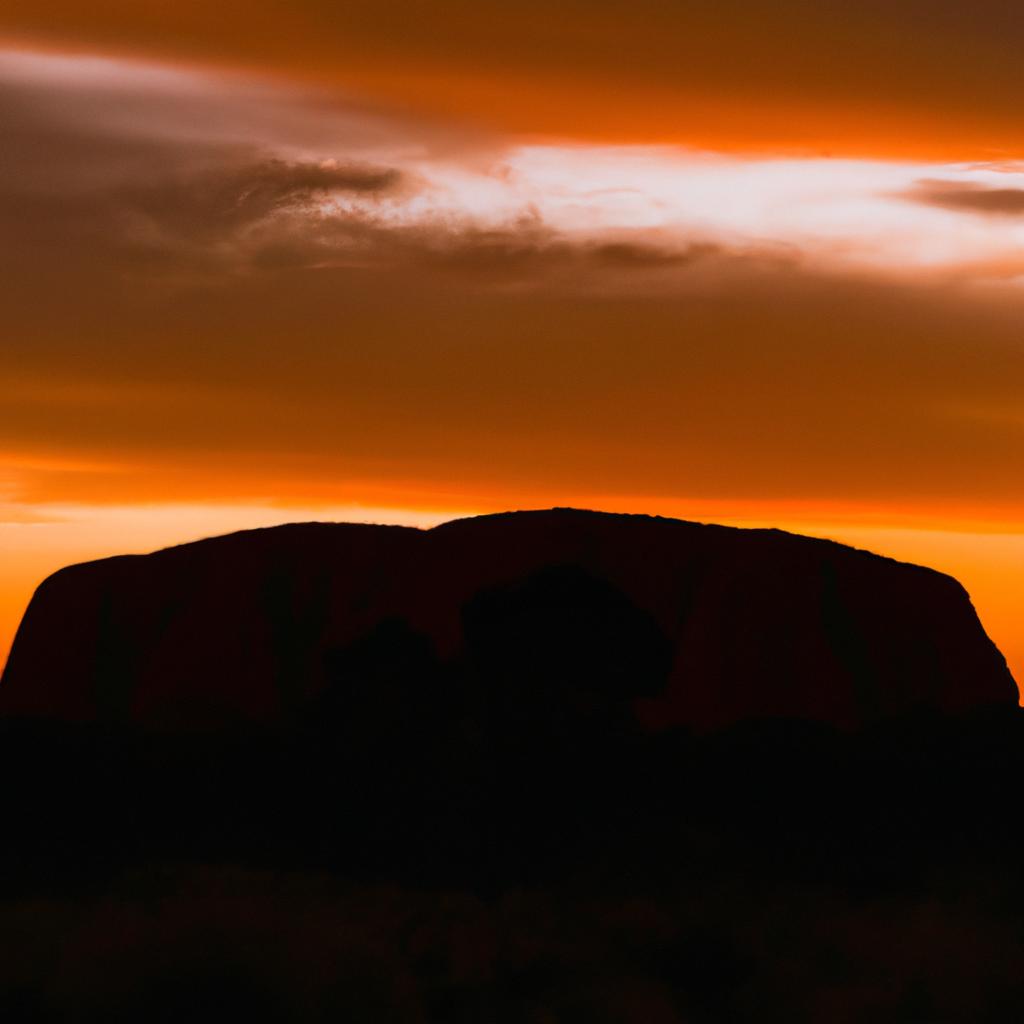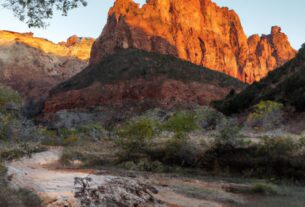Uluru (Ayers Rock) is a name that evokes a sense of awe and wonder. This breathtaking sandstone monolith, located in the heart of the Australian Outback, stands at an astonishing 348 meters high and covers an area of 9.4 square kilometers. It is not only one of the world’s largest monoliths but also holds immense geological and cultural significance. Let’s dive deeper into this iconic landmark and uncover its wonders.
Location and Geology
Uluru (Ayers Rock) is situated in the Uluru-Kata Tjuta National Park, near the town of Yulara in Australia’s Northern Territory. It is easily accessible by car, bus, or air, approximately 440 kilometers southwest of Alice Springs. The journey itself is worth the effort, as the surrounding landscape showcases the raw beauty of the Australian Outback.
The formation of Uluru (Ayers Rock) began around 550 million years ago when the region was submerged under a shallow sea. Over millions of years, sediments like sand and mud were deposited, forming layers at the bottom of the sea. These layers eventually compressed into sandstone. Around 400 million years ago, tectonic activity caused the layers of sandstone to tilt almost vertically. Erosion then worked its magic, sculpting the land and revealing the marvel that is Uluru (Ayers Rock).
What makes Uluru (Ayers Rock) even more captivating is its changing colors throughout the day. Depending on the angle of the sun, the rock transitions from yellow to deep red and even purple. Witnessing this natural phenomenon is a truly awe-inspiring experience.
Cultural Significance
Uluru (Ayers Rock) is not only a geological wonder but also a cultural icon for the Anangu people, the traditional owners of the land. These indigenous people have called this region home for over 30,000 years, and their connection to Uluru (Ayers Rock) runs deep.
According to Anangu creation stories, Uluru (Ayers Rock) came into existence during the Dreamtime. This mythical era saw ancestral beings shape the land and establish the laws and customs of the Anangu people. Legend has it that Uluru (Ayers Rock) was formed through a great battle between two ancestral beings, the Kuniya (woma python) and the Liru (poisonous snake). The snakes fought fiercely, resulting in the death of Liru, who transformed into Uluru (Ayers Rock).
For the Anangu people, Uluru (Ayers Rock) is considered a living entity, imbued with a spirit that connects them to their land and ancestors. They hold profound respect for the rock and urge visitors to treat it with the same reverence. Climbing Uluru (Ayers Rock) is discouraged as it is considered disrespectful to the Anangu culture. So, while exploring the area around Uluru (Ayers Rock), let us be mindful of their traditions.
Tourism and Conservation
Uluru (Ayers Rock) attracts over 400,000 visitors each year, all eager to witness its wonders firsthand. The rock’s unique geological formation and cultural significance make it an unforgettable destination for travelers exploring Australia. There are various activities available to suit all interests, ranging from guided tours to hiking trails and cultural experiences.
During guided tours, visitors can delve into the Anangu people’s culture and history, gaining a deeper understanding of their connection to the land. Cultural experiences such as bush tucker tours allow visitors to learn about traditional Anangu customs and taste native foods. These experiences serve as a gateway to better appreciate the cultural richness surrounding Uluru (Ayers Rock).
However, it is crucial to be aware of the impact of tourism on the environment and the Aboriginal community. Preserving the delicate balance between tourism and conservation is of utmost importance. The Anangu people, in collaboration with the Australian government, have implemented measures to protect the site’s cultural and natural integrity.
To reduce environmental impact, visitors are asked to adhere to a carry-in carry-out policy, ensuring that no rubbish is left behind. Camping and fires are limited to designated areas, while marked paths help preserve the delicate ecosystem. Furthermore, the cultural center provides valuable insights into the Anangu culture and serves as a platform for performances and workshops.
The Australian government has also contributed significantly to conservation efforts. Through investments in infrastructure and facilities, the government aims to manage visitor numbers and minimize the impact of tourism on the environment. By working hand in hand with the Anangu people, they ensure the protection of Uluru (Ayers Rock) and its cultural significance.
Conclusion: Embracing Heritage and Conservation
Uluru (Ayers Rock) is an unparalleled marvel, captivating both geologically and culturally. Its grandeur and significance make it a must-visit destination for anyone traveling to Australia. However, we must always remember that Uluru (Ayers Rock) is not just a tourist attraction; it is a sacred site deserving utmost respect and protection.
At TooLacks, we champion the preservation of our planet’s natural and cultural wonders. Let us all do our part in respecting and safeguarding these treasures. If you’re intrigued by Uluru (Ayers Rock) and want to learn more, head over to TooLacks for further exploration. Together, we can ensure that future generations have the chance to experience the awe-inspiring beauty of Uluru (Ayers Rock) for years to come.



